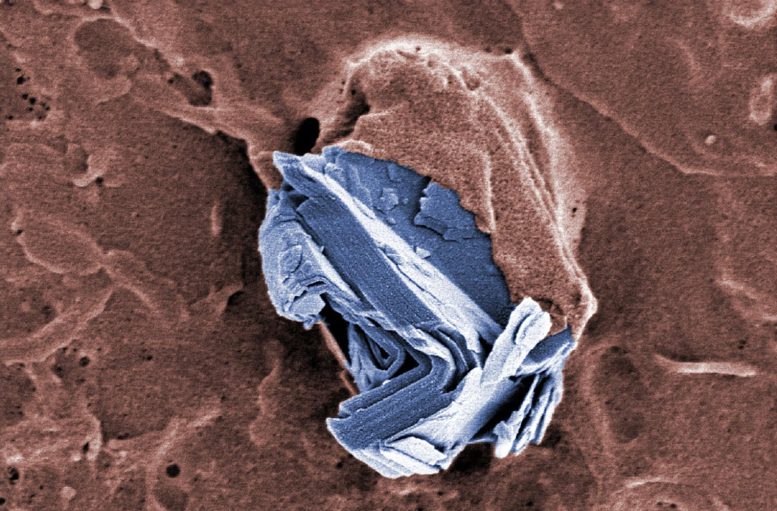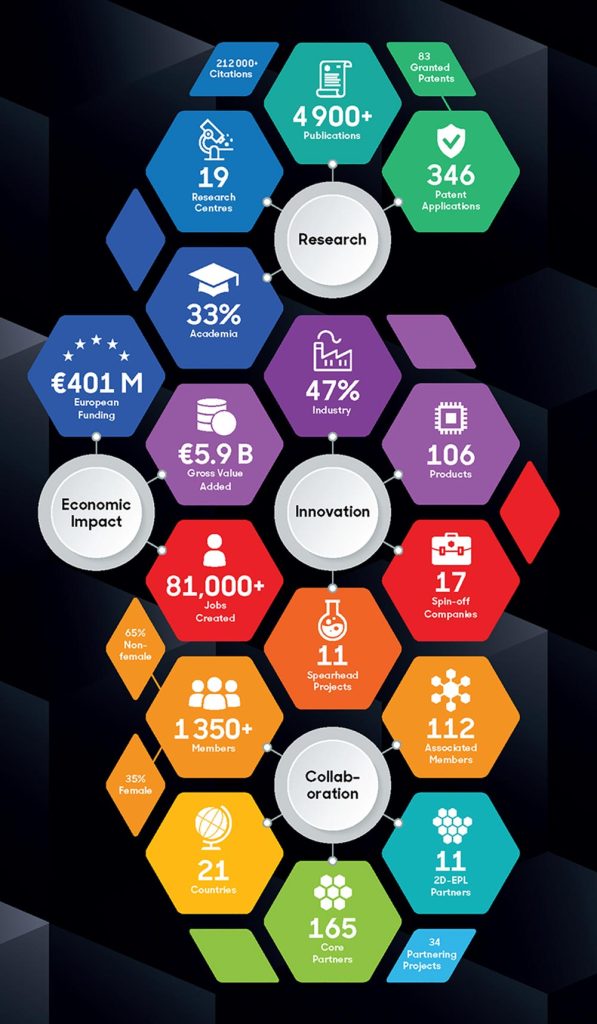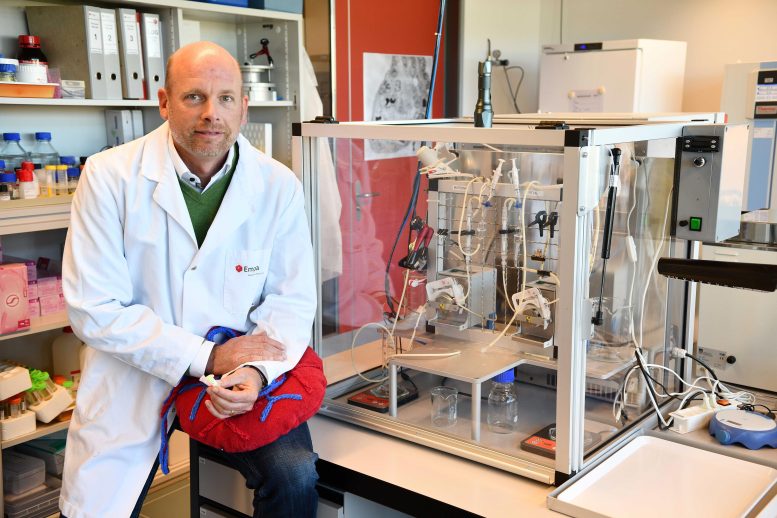
The “Graphene Flagship” initiative has investigated the effects of graphene (blue) and related materials on health and the environment. Colored scanning electron microscopy. Credit: Empa
The largest EU research initiative ever launched has come to a successful end: The Graphene Flagship was officially concluded at the end of last year. Empa researchers were also involved, such as molecular biologist Peter Wick, who was part of the Health and Environment work package from the very beginning – and has just summarized the findings in this area with international colleagues in a comprehensive review article in the specialist journal ACS Nano.
Think big. Despite its research topic, this could well be the motto of the Graphene Flagship, which was launched in 2013: With an overall budget of one billion Euros, it was Europe’s largest research initiative to date, alongside the Human Brain Flagship, which was launched at the same time. The same applies to the review article on the effects of
In their analyses, Wick and Co. did not limit themselves to newly produced graphene-like materials, but also looked at the entire life cycle of various applications of graphene-containing materials. In other words, they investigated questions such as: What happens when these materials are abraded or burnt? Are graphene particles released, and can this fine dust harm cells, tissues, or the environment?
One example: The addition of a few percent graphene to polymers, such as epoxy resins or polyamides, significantly improves material properties such as mechanical stability or conductivity, but the abrasion particles do not cause any graphene-specific nanotoxic effect on the cells and tissues tested. Wick’s team will be able to continue this research even after the flagship project has come to an end, also thanks to funding from the EU as part of so-called Spearhead projects, of which Wick is deputy head.
In addition to Wick’s team, Empa researchers led by Bernd Nowack have used material flow analyses as part of the Graphene Flagship to calculate the potential future environmental impact of materials containing graphene and have modeled which ecosystems are likely to be impacted and to what extent. Roland Hischier’s team, like Nowack’s at Empa’s Technology and Society lab, used life cycle assessments to investigate the environmental sustainability of different production methods and application examples for various graphene-containing materials. And Roman Fasel’s team from Empa’s nanotech@surfaces lab has advanced the development of electronic components based on narrow graphene ribbons.

The “Graphene Flagship” initiative in numbers. Credit: Empa
A European success story for research and innovation
Launched in 2013, the Graphene Flagship represented a completely new form of joint, coordinated research on an unprecedented scale. The aim of the large-scale project was to bring together researchers from research institutions and industry to bring practical applications based on graphene from the laboratory to the market within ten years, thereby creating economic growth, new jobs, and new opportunities for Europe in key technologies. Over its ten-year lifetime, the consortium consisted of more than 150 academic and industrial research teams in 23 countries plus numerous associated members.
Last September, the ten-year funding period ended with the Graphene Week in Gothenburg, Sweden. The final report impressively demonstrates the success of the ambitious large-scale project: The Flagship has “produced” almost 5,000 scientific publications and more than 80 patents. It has created 17 spin-offs in the graphene sector, which have raised a total of more than 130 million Euros in venture capital. According to a study by the German economic research institute WifOR, the Graphene Flagship has led to a total added value of around 5.9 billion Euros in the participating countries and created more than 80,000 new jobs in Europe. This means that the impact of the Graphene Flagship is more than 10 times greater than shorter EU projects.

Empa researcher Peter Wick was involved in the “Workpackage Health and Environment” from the very beginning. Credit: Empa
In the course of the project, Empa received a total of around three million Swiss francs in funding – which had a “catalytic” effect, as Peter Wick emphasizes: “We have roughly tripled this sum through follow-up projects totaling around 5.5 million Swiss francs, including further EU projects, projects funded by the Swiss National Science Foundation (SNSF) and direct cooperation projects with our industrial partners – and all this in the last five years.”
But the advantage of such projects goes far beyond the generous funding, emphasizes Wick: “It is truly unique to be involved in such a large project and broad network over such a long period of time. On the one hand, it has resulted in numerous new collaborations and ideas for projects. On the other hand, working together with international partners over such a long period of time has a completely different quality, we trust each other almost blindly; and such a well-coordinated team is much more efficient and produces better scientific results,” Wick is convinced. Last but not least, many personal friendships came about.
A new dimension: graphene and other 2D materials
Graphene is an enormously promising material. It consists of a single layer of carbon atoms arranged in a honeycomb pattern and has extraordinary properties: exceptional mechanical strength, flexibility, transparency, and outstanding thermal and electrical conductivity. If the already two-dimensional material is spatially restricted even more, for example into a narrow ribbon, controllable quantum effects can be created. This could enable a wide range of applications, from vehicle construction and energy storage to SciTechDaily